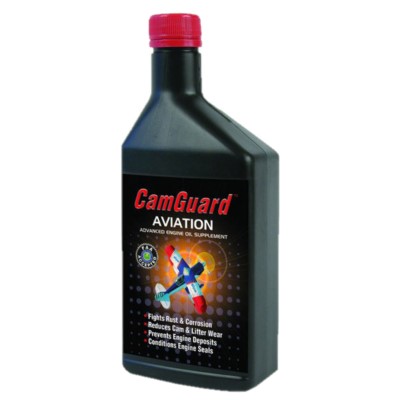CamGuard Aviation is a blend of 11 high performance additives that fortify piston aircraft oils to provide the utmost in engine protection. Because of FAA regulations and costs, even the newest commercial aircraft oil technology is antiquated.
Camguard Oil Supplement
| SKU | Size | Sold By | Hazardous Shipping | Price | Buy | Cart |
Description
CamGuard Aviation addresses the complex interrelated problems of corrosion, deposits and wear in air-cooled piston aircraft engines. Infrequent engine use leads to pitting corrosion on cam and lifter surfaces. This pitting causes rapid cam and lifter wear, or worse, catastrophic spalling. Current oil technology allows the buildup of deposits that leads to accelerated cylinder and ring wear resulting in decreased compressions and increased maintenance.
- Contains powerful multi-metal corrosion inhibitors that prevent rust and corrosion in infrequently used engines.
- Contains advanced anti-wear additives to dramatically reduce the wear of cams, lifters, cylinders, rings, gears and valve guides.
- Provides excellent anti wear (anti-scuff) protection, during “dry” starts after periods of prolonged inactivity, by maintaining a residual active film on critical parts.
- Utilizes unique ashless deposit control additives that prevent the formation of deposits throughout the engine. In older engines the lack of new deposit formation allows component motions to free up deposit laden sticky parts.
- Contains seal conditioners that nullify the effects of heat and time to keep seals supple, flexible, and performing like new.
- Compatible with all aviation oils including mineral based, and semi-synthetic types.
Q & A
Ask a question
There are no questions yet

